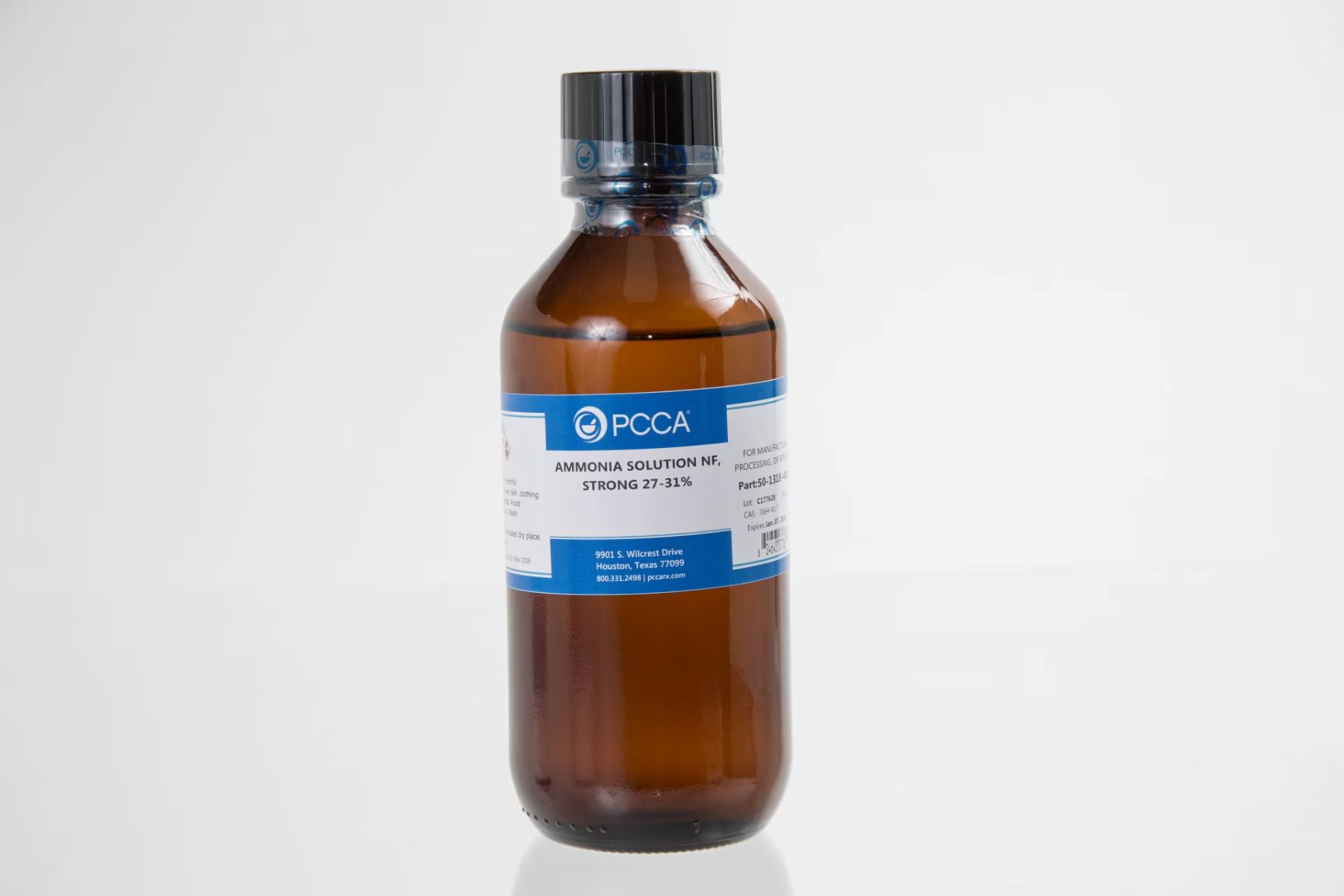Home>Food and Cooking>The Surprising Reason Canola Oil Beats Sunflower Oil – Oleic Acid Holds The Key!


Food and Cooking
The Surprising Reason Canola Oil Beats Sunflower Oil – Oleic Acid Holds The Key!
Published: January 31, 2024
Discover the surprising reason why canola oil outperforms sunflower oil in cooking. Oleic acid is the key to unlocking its potential. Learn more about food and cooking.
(Many of the links in this article redirect to a specific reviewed product. Your purchase of these products through affiliate links helps to generate commission for Regretless.com, at no extra cost. Learn more)
Table of Contents
Introduction
When it comes to cooking oils, the options seem endless. From olive oil to coconut oil, each type boasts unique flavors and nutritional profiles. Two popular choices, canola oil and sunflower oil, often find themselves compared in the culinary world. While both oils have their merits, one surprising factor sets them apart – oleic acid. This unsung hero plays a pivotal role in determining the health benefits and culinary versatility of these oils. In this article, we'll delve into the composition of canola oil and sunflower oil, exploring the crucial role of oleic acid in each and uncovering the surprising reason why canola oil emerges as the winner. Let's embark on a journey through the world of cooking oils and discover how oleic acid holds the key to unlocking their true potential.
The Composition of Canola Oil and Sunflower Oil
Canola oil and sunflower oil are both widely used in cooking and are known for their distinct flavors and versatility. Understanding the composition of these oils is crucial in determining their nutritional value and culinary applications.
Canola Oil
Canola oil is extracted from the seeds of the canola plant, which belongs to the Brassicaceae family. It is renowned for its light texture and neutral flavor, making it a popular choice for various cooking methods. The composition of canola oil sets it apart as a heart-healthy option. It is low in saturated fats and high in monounsaturated fats, specifically oleic acid. Additionally, canola oil contains alpha-linolenic acid (an omega-3 fatty acid), linoleic acid (an omega-6 fatty acid), and a moderate amount of saturated fats.
Sunflower Oil
Sunflower oil, as the name suggests, is extracted from sunflower seeds. It is known for its mild flavor and light color, making it suitable for both cooking and baking. The composition of sunflower oil differs from that of canola oil. It is rich in polyunsaturated fats, particularly linoleic acid, which is an omega-6 fatty acid. Sunflower oil also contains monounsaturated fats, including oleic acid, albeit in lower quantities compared to canola oil. Additionally, it contains a moderate amount of saturated fats.
Understanding the composition of these oils provides insight into their distinct characteristics and nutritional profiles. While both canola oil and sunflower oil offer health benefits, their differing compositions make them suitable for different culinary applications. By exploring the role of oleic acid in each oil, we can further unravel the unique properties that set them apart in the world of cooking oils.
The Role of Oleic Acid in Canola Oil
Oleic acid, a monounsaturated omega-9 fatty acid, is a standout component of canola oil that contributes significantly to its nutritional value and culinary versatility. Comprising approximately 60-70% of the total fatty acid content in canola oil, oleic acid plays a pivotal role in enhancing its health benefits and stability during cooking.
One of the key attributes of oleic acid is its ability to promote heart health. Studies have shown that monounsaturated fats, such as oleic acid, can help lower levels of LDL (low-density lipoprotein) cholesterol, often referred to as "bad" cholesterol. By reducing LDL cholesterol, oleic acid supports cardiovascular well-being, potentially lowering the risk of heart disease. This makes canola oil a favorable choice for those seeking to maintain a heart-healthy diet.
In addition to its cardiovascular benefits, the high oleic acid content in canola oil contributes to its stability at high temperatures. When exposed to heat during cooking, oils with a higher proportion of monounsaturated fats, such as oleic acid, are less prone to oxidation. This means that canola oil can maintain its quality and nutritional integrity when used for frying or high-heat cooking methods, making it a reliable option for a wide range of culinary applications.
Furthermore, the presence of oleic acid in canola oil lends it a light and neutral flavor profile, allowing it to complement a variety of dishes without overpowering the natural flavors of the ingredients. Whether used for sautéing, baking, or salad dressings, the inclusion of oleic acid enhances the overall sensory experience of the prepared dishes.
The role of oleic acid in canola oil extends beyond its nutritional and culinary advantages. Its presence contributes to the oil's shelf stability, prolonging its freshness and usability. This is particularly beneficial for households and professional kitchens alike, as it ensures that canola oil remains a reliable cooking staple over an extended period.
In essence, the high content of oleic acid in canola oil sets it apart as a heart-healthy, versatile, and stable cooking oil. By understanding the pivotal role of oleic acid in canola oil, individuals can make informed choices when selecting cooking oils, prioritizing both health and culinary excellence.
Read more: How To Hold A Violin Bow
The Role of Oleic Acid in Sunflower Oil
Oleic acid, although present in smaller quantities compared to canola oil, plays a significant role in shaping the nutritional profile and culinary applications of sunflower oil. As a monounsaturated omega-9 fatty acid, oleic acid constitutes approximately 20-30% of the total fatty acid content in sunflower oil. Despite being overshadowed by its higher prevalence in canola oil, oleic acid in sunflower oil offers distinct benefits and contributes to its versatility in cooking and its potential impact on health.
One of the notable attributes of oleic acid is its potential to promote cardiovascular well-being. While sunflower oil is renowned for its high content of polyunsaturated fats, particularly linoleic acid, the presence of oleic acid complements its nutritional profile by offering heart-healthy properties. Research suggests that monounsaturated fats, including oleic acid, may contribute to reducing LDL (low-density lipoprotein) cholesterol levels, thus supporting overall heart health. This indicates that sunflower oil, with its combination of polyunsaturated and monounsaturated fats, can be part of a heart-conscious diet.
In culinary applications, the presence of oleic acid in sunflower oil contributes to its stability and versatility. While sunflower oil is often used for sautéing, frying, and baking, the inclusion of oleic acid enhances its resistance to oxidation at high temperatures. This means that sunflower oil can maintain its quality and nutritional integrity when subjected to heat, making it a reliable option for various cooking methods. The ability of sunflower oil to retain its properties during cooking is attributed, in part, to the presence of oleic acid, which enhances its suitability for a wide range of culinary endeavors.
Furthermore, the moderate content of oleic acid in sunflower oil contributes to its mild flavor profile, making it a versatile ingredient in various dishes. Whether used for salad dressings, marinades, or as a cooking oil, the inclusion of oleic acid enhances the overall sensory experience of the prepared dishes, adding a subtle richness to the flavors without overpowering the natural essence of the ingredients.
In summary, while sunflower oil contains a lower proportion of oleic acid compared to canola oil, its presence contributes to the oil's nutritional value, stability during cooking, and overall culinary appeal. Understanding the role of oleic acid in sunflower oil provides insight into its potential health benefits and reinforces its position as a versatile and valuable cooking oil option.
The Health Benefits of Oleic Acid
Oleic acid, a monounsaturated omega-9 fatty acid found in abundance in canola oil and present in significant quantities in sunflower oil, offers a myriad of health benefits that contribute to overall well-being. Understanding the impact of oleic acid on health underscores the significance of incorporating oils rich in this beneficial fatty acid into a balanced diet.
One of the primary health benefits of oleic acid is its potential to promote cardiovascular health. Research indicates that monounsaturated fats, including oleic acid, can play a crucial role in reducing levels of LDL (low-density lipoprotein) cholesterol, which is associated with an increased risk of heart disease. By incorporating oils rich in oleic acid, such as canola oil and sunflower oil, into the diet, individuals can support heart health and potentially lower the risk of cardiovascular conditions.
Moreover, oleic acid exhibits anti-inflammatory properties, which are integral to maintaining overall health and well-being. Chronic inflammation has been linked to various health issues, including cardiovascular disease, arthritis, and certain types of cancer. By consuming foods containing oleic acid, individuals may help mitigate inflammation in the body, thereby reducing the risk of developing inflammatory-related conditions.
In addition to its role in cardiovascular health and inflammation, oleic acid contributes to the absorption of essential nutrients. When consumed as part of a balanced diet, oleic acid aids in the absorption of fat-soluble vitamins, such as vitamins A, D, E, and K. This ensures that the body effectively utilizes these vital nutrients, supporting various physiological functions and contributing to overall health.
Furthermore, the inclusion of oleic acid in the diet may have a positive impact on insulin sensitivity. Studies suggest that monounsaturated fats, including oleic acid, can improve insulin sensitivity, potentially reducing the risk of type 2 diabetes. By incorporating oils rich in oleic acid, individuals can support metabolic health and contribute to a balanced approach to blood sugar management.
In essence, the health benefits of oleic acid extend beyond cardiovascular health, encompassing anti-inflammatory properties, nutrient absorption, and potential implications for insulin sensitivity. By prioritizing the inclusion of oils rich in oleic acid, such as canola oil and sunflower oil, individuals can harness the nutritional advantages of this beneficial fatty acid, supporting overall health and well-being.
Conclusion
In the realm of cooking oils, the composition and properties of canola oil and sunflower oil have been illuminated, shedding light on the pivotal role of oleic acid in shaping their nutritional value and culinary versatility. Canola oil, with its high content of oleic acid, emerges as a standout option for those seeking a heart-healthy and stable cooking oil. The significant presence of oleic acid not only contributes to the oil's potential to promote cardiovascular well-being but also enhances its suitability for a wide range of culinary applications. From sautéing to baking, canola oil's high oleic acid content ensures both nutritional integrity and sensory appeal, offering a reliable and versatile option for home cooks and professional chefs alike.
Conversely, sunflower oil, while containing a lower proportion of oleic acid compared to canola oil, showcases its own unique attributes. The inclusion of oleic acid in sunflower oil complements its rich content of polyunsaturated fats, contributing to its stability during cooking and potential health benefits, particularly in supporting heart health. Sunflower oil's versatility in culinary endeavors is enhanced by the presence of oleic acid, adding a subtle richness to dishes without overshadowing their natural flavors.
The health benefits of oleic acid extend beyond its role in promoting cardiovascular health, encompassing anti-inflammatory properties, nutrient absorption, and potential implications for insulin sensitivity. By understanding the impact of oleic acid on health, individuals can make informed choices when selecting cooking oils, prioritizing both nutritional advantages and culinary excellence.
In conclusion, the surprising reason canola oil emerges as a favorable choice over sunflower oil lies in the remarkable influence of oleic acid. This unsung hero holds the key to unlocking the true potential of cooking oils, offering a pathway to heart-healthy, versatile, and flavorful culinary experiences. Whether it's the high oleic acid content in canola oil or the complementary presence of oleic acid in sunflower oil, the role of this beneficial fatty acid underscores the significance of incorporating it into a balanced diet. As individuals navigate the diverse landscape of cooking oils, the presence of oleic acid serves as a guiding beacon, illuminating the path to both culinary mastery and holistic well-being.














